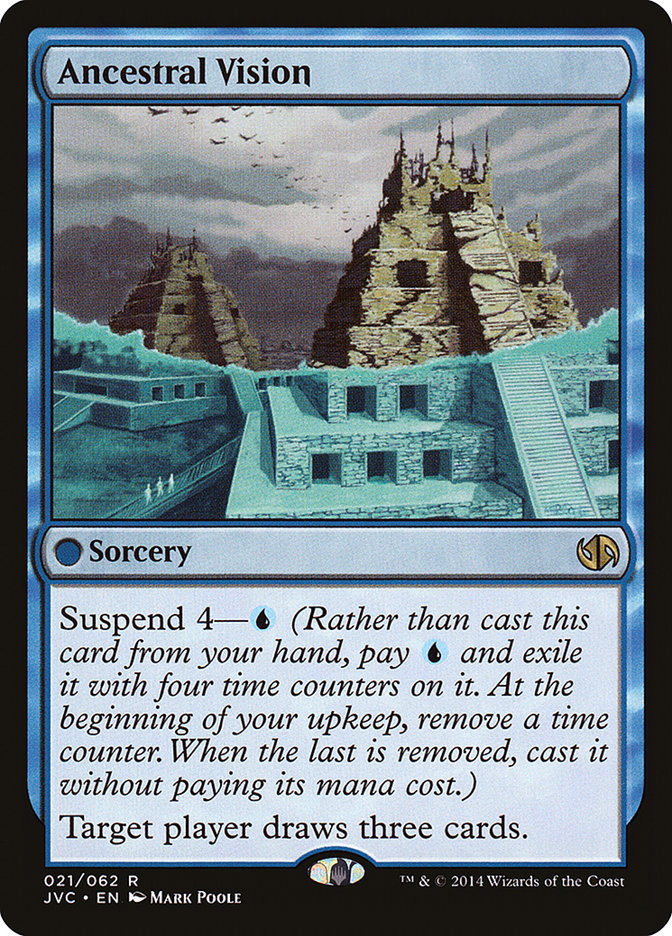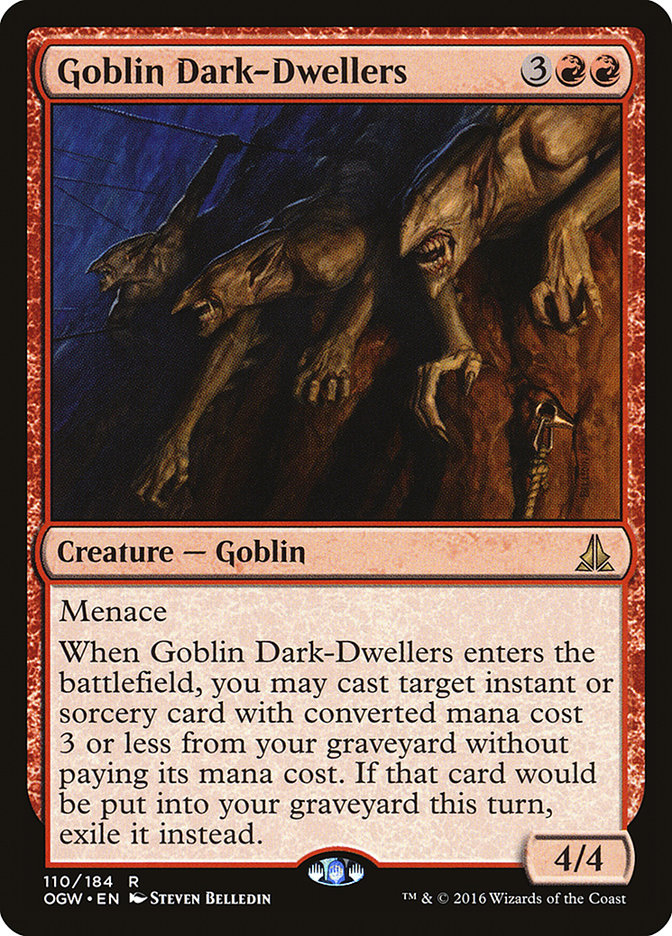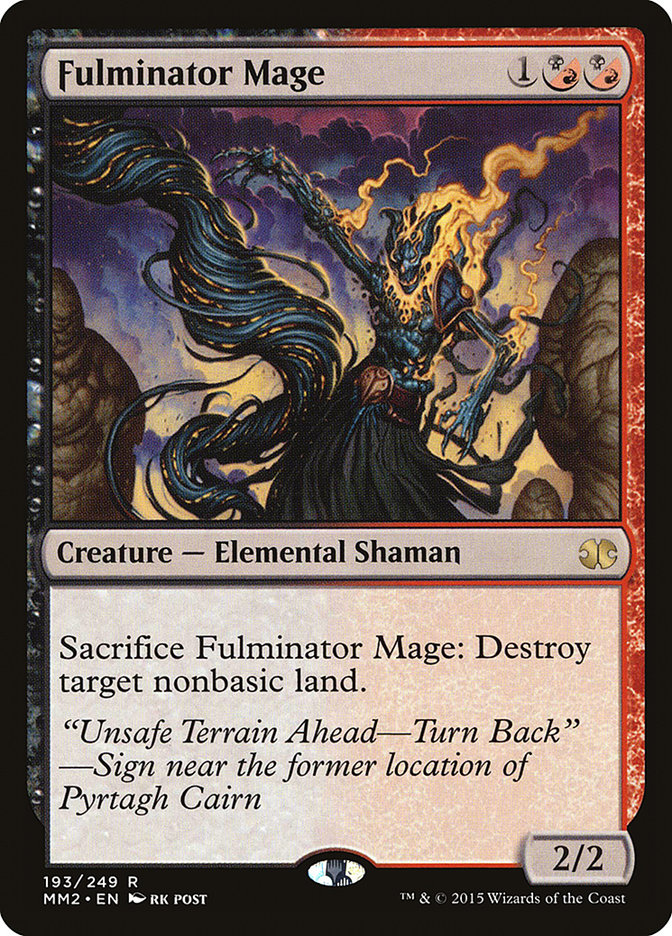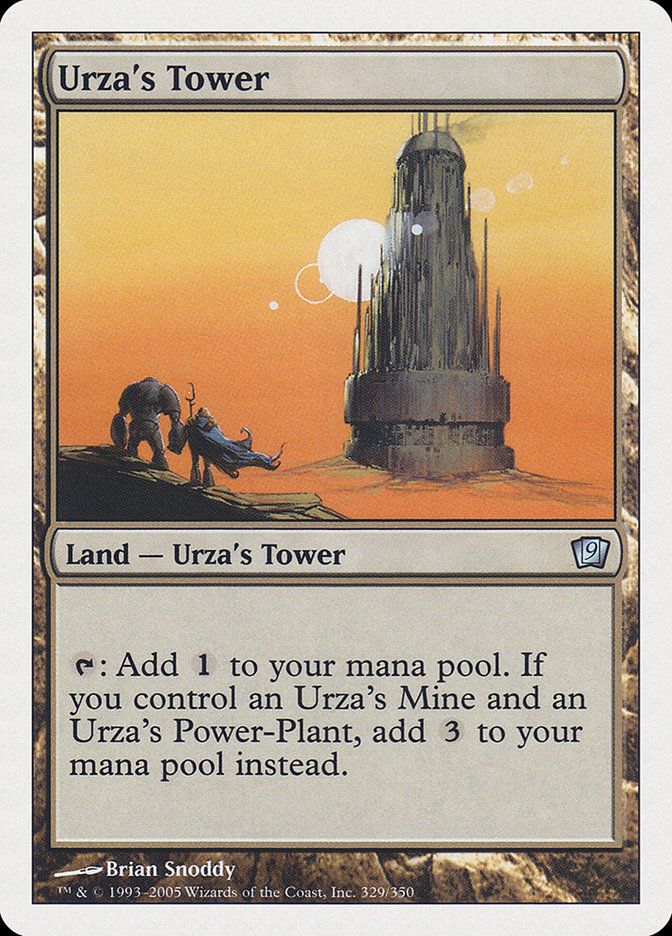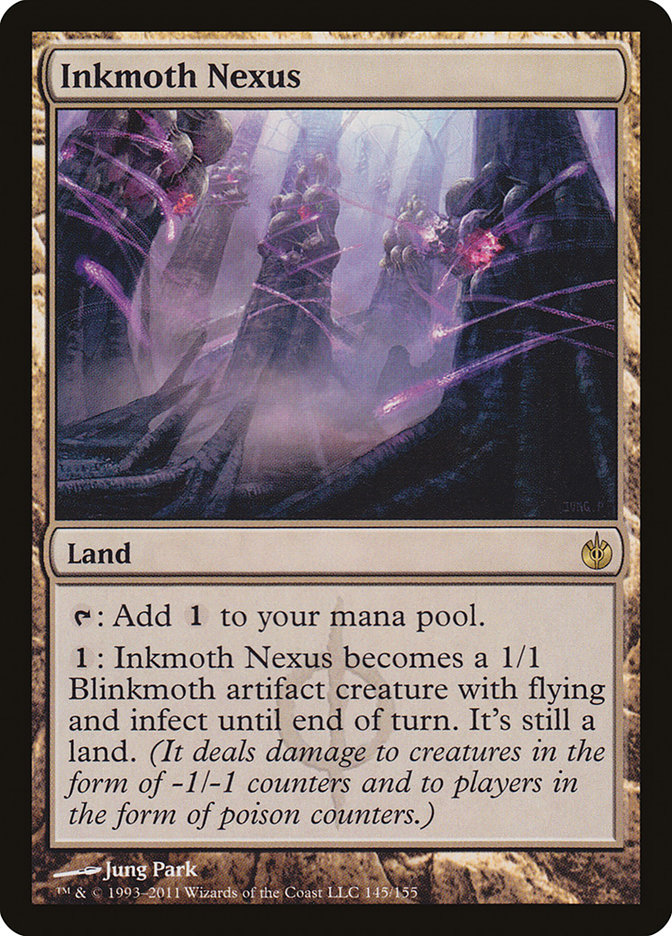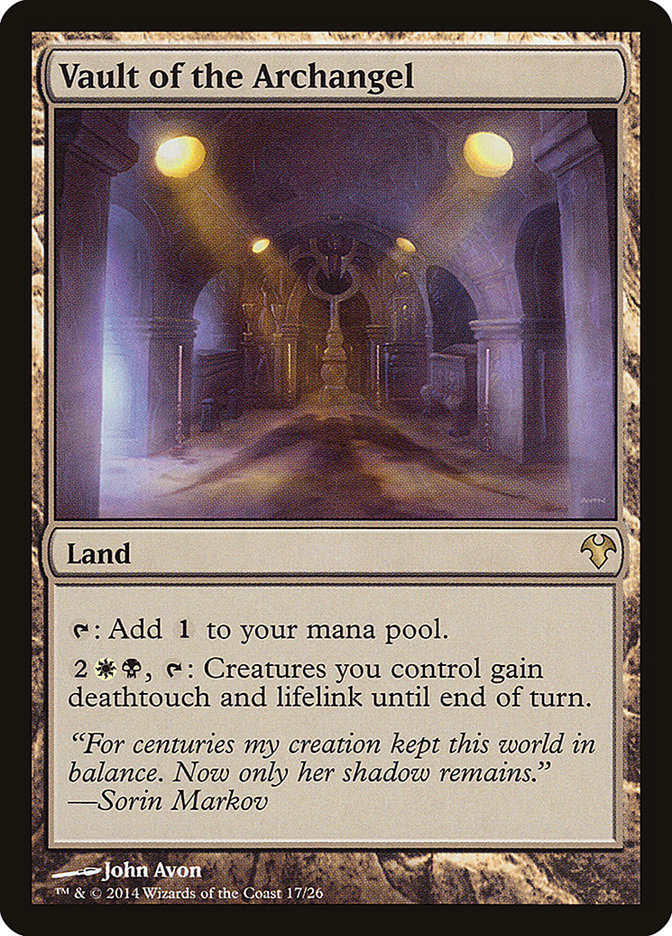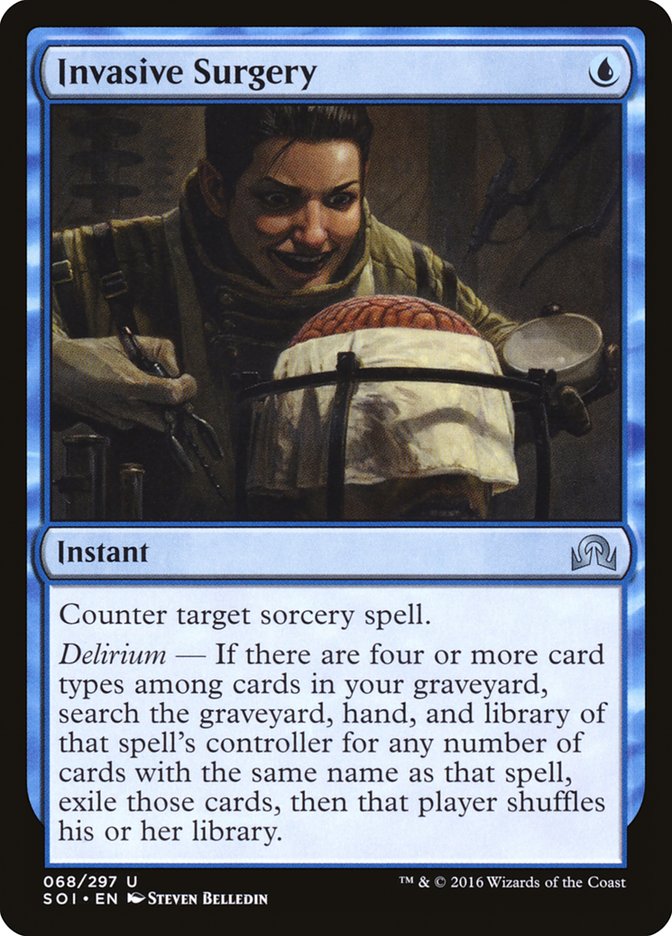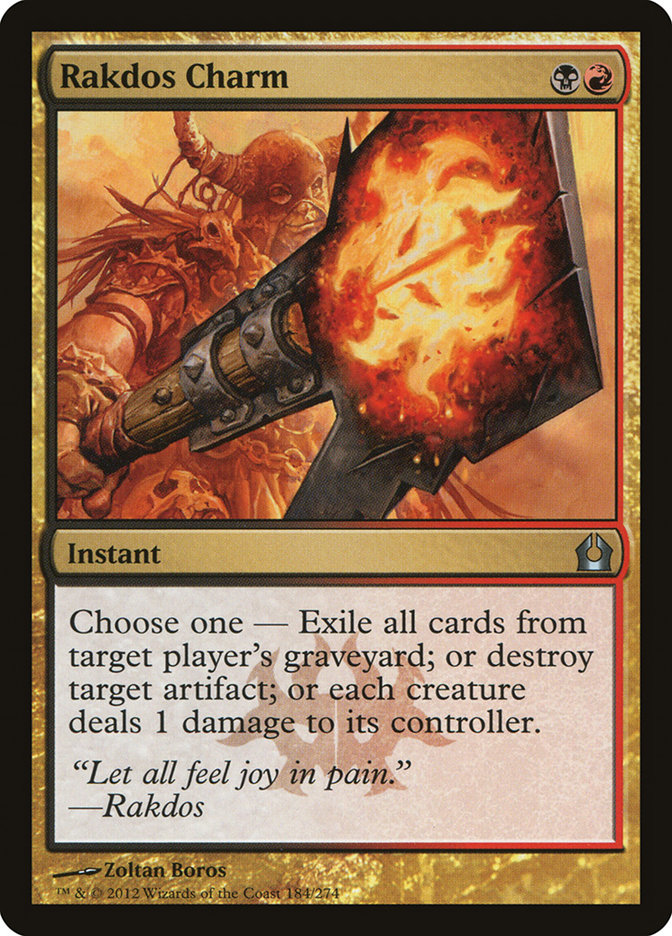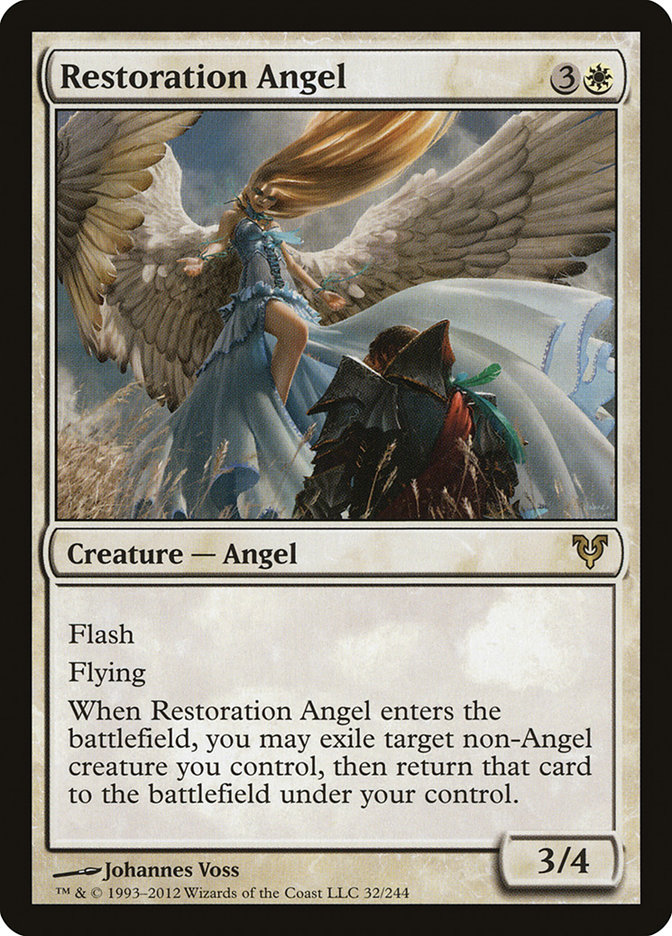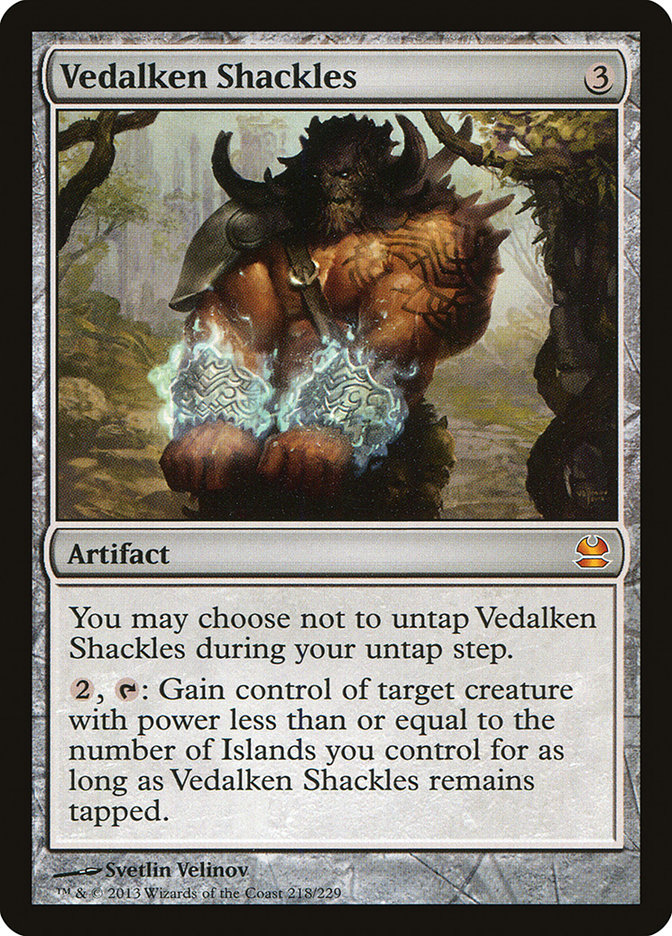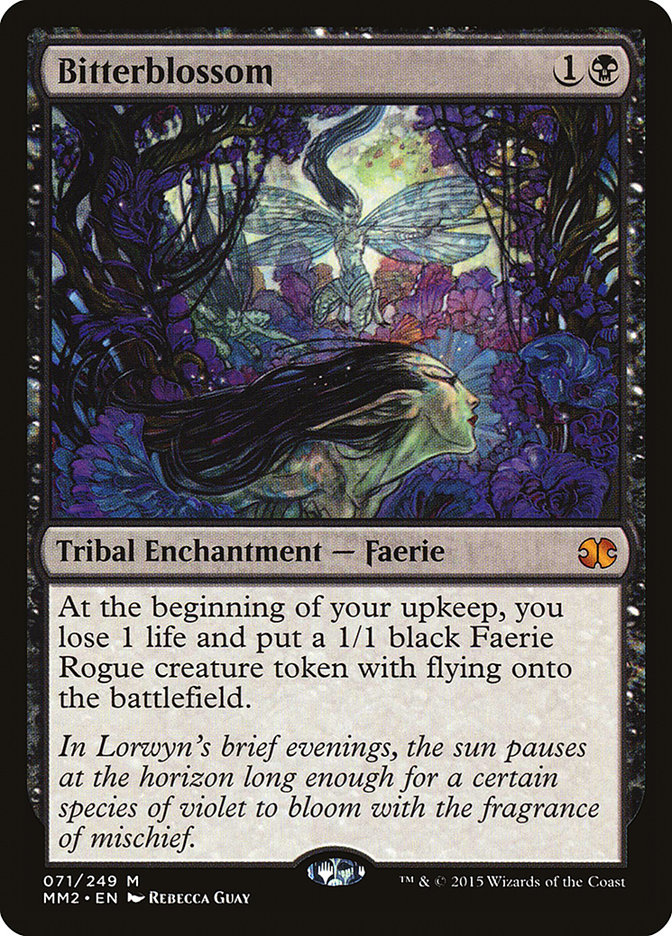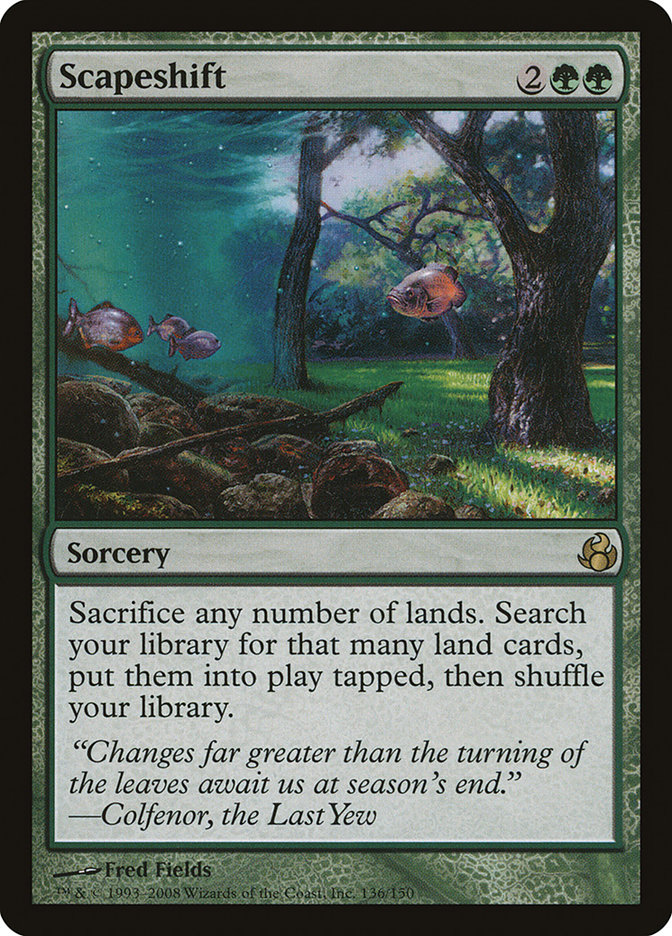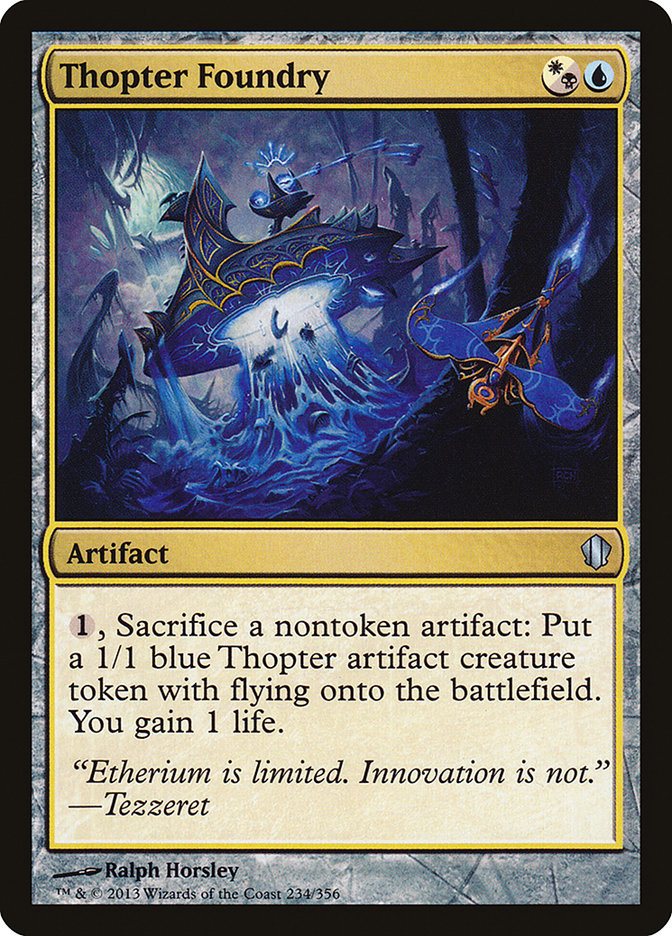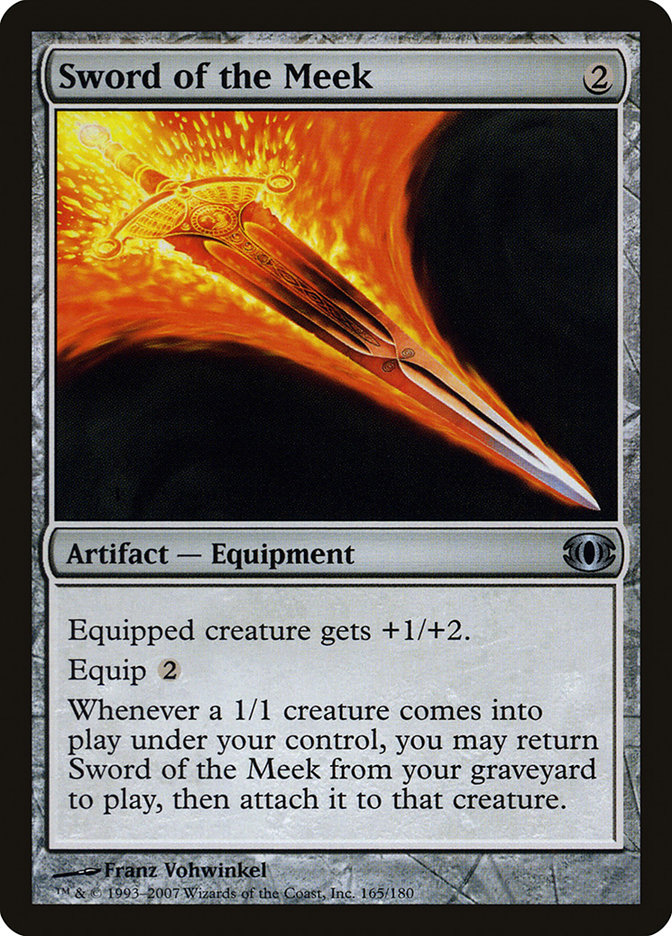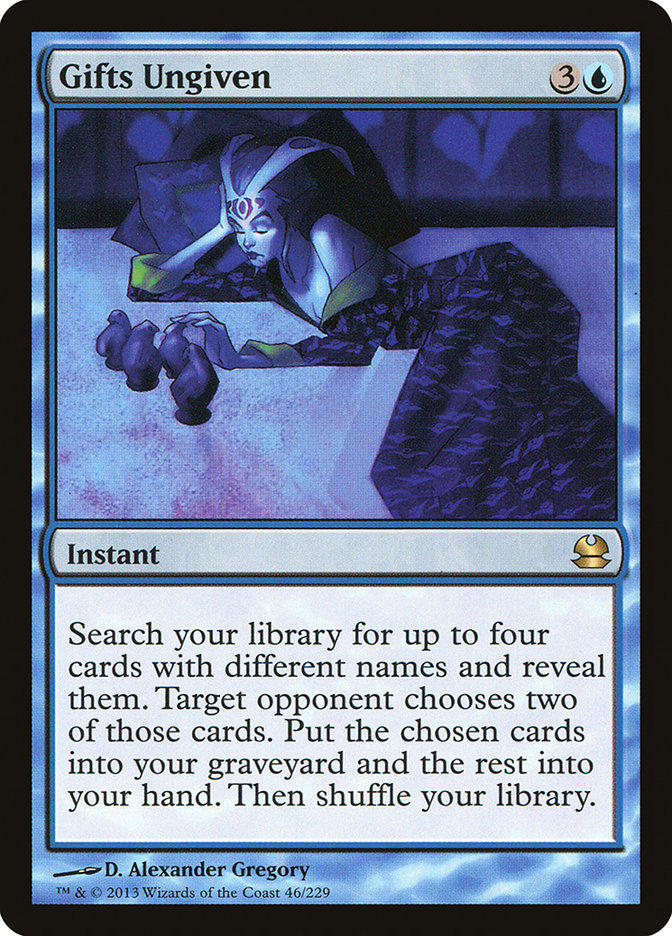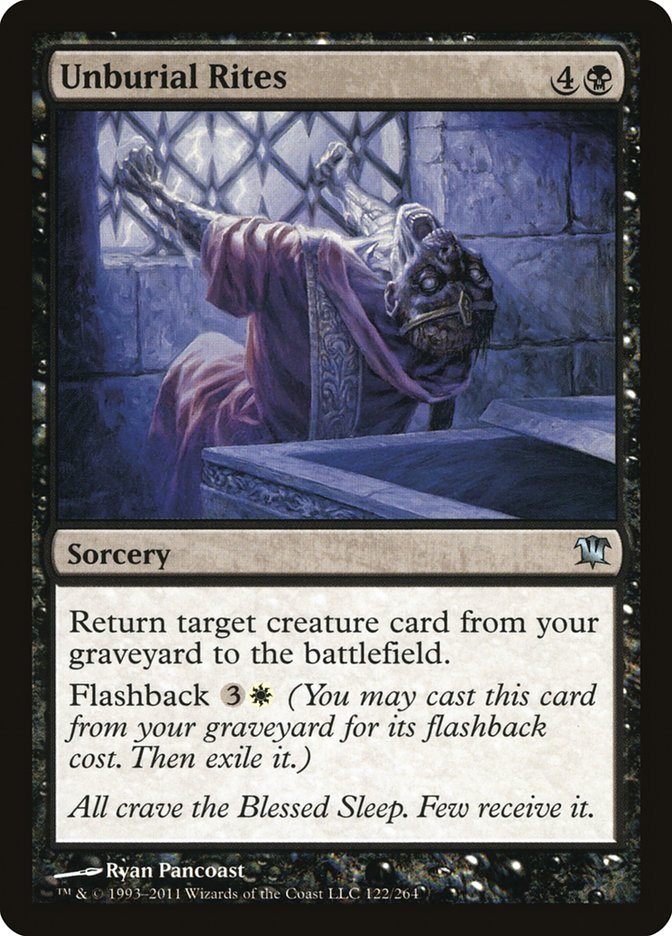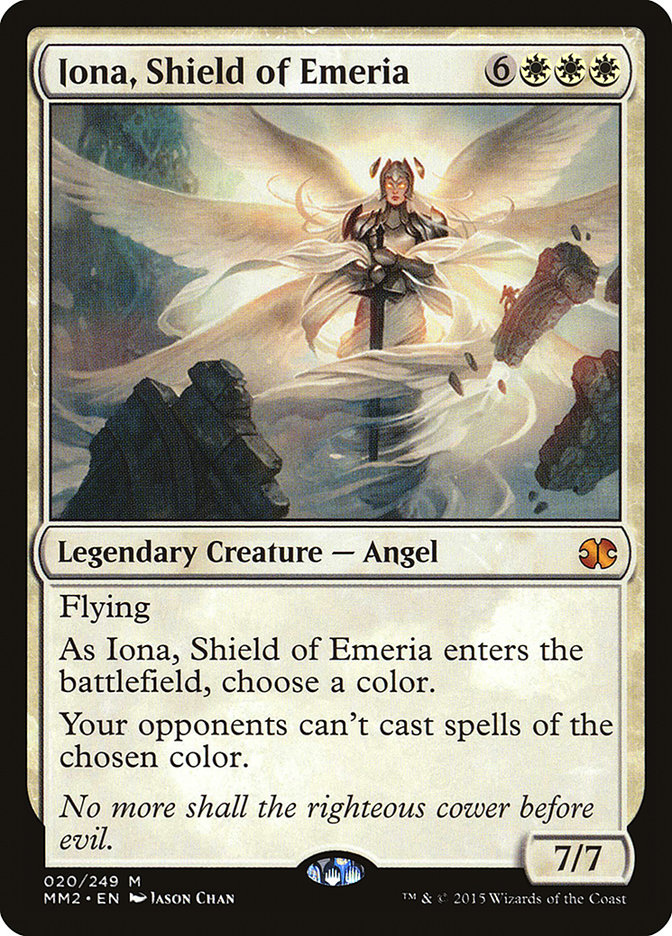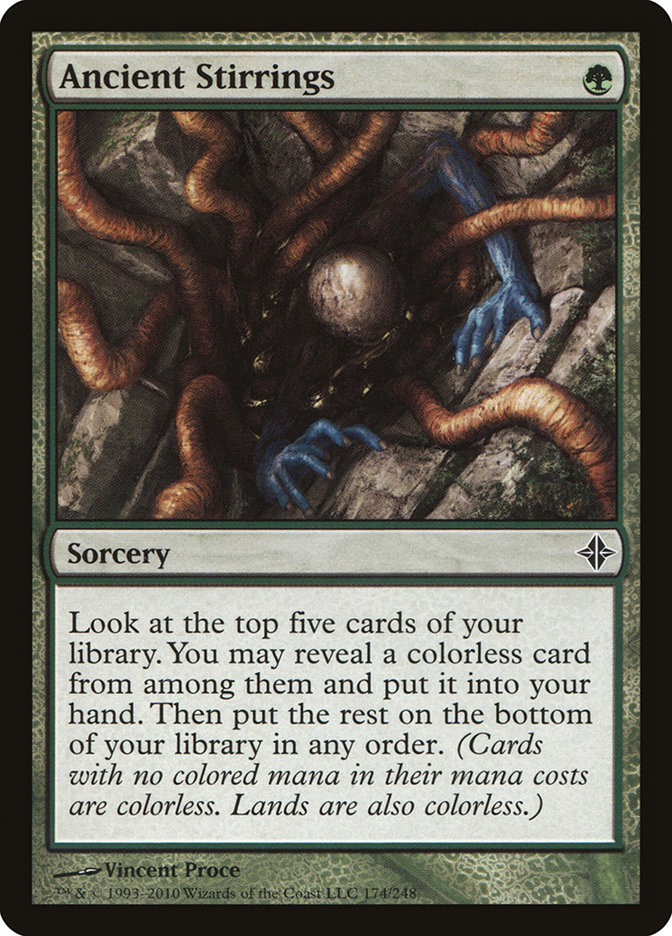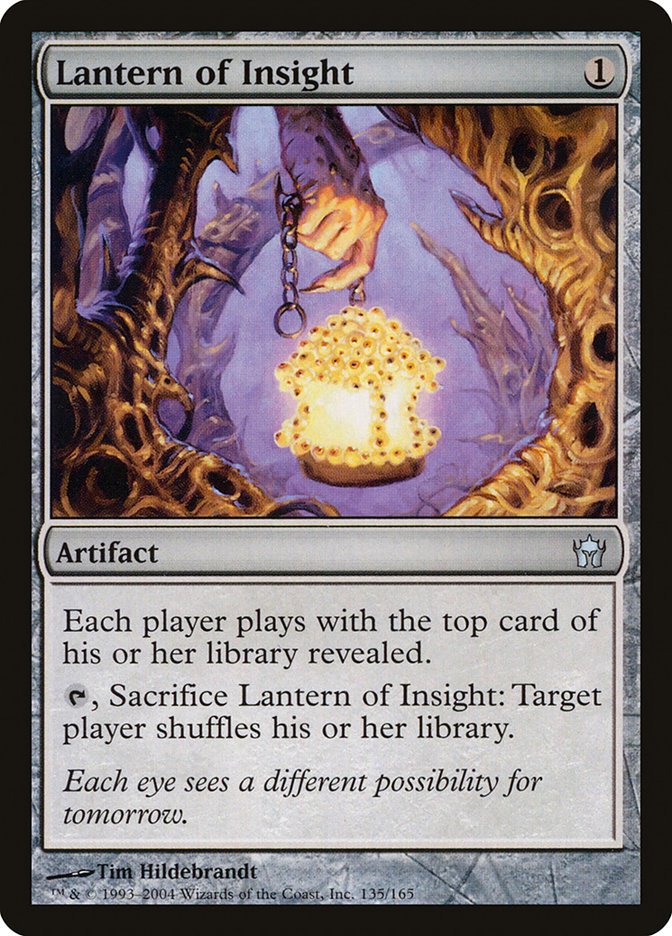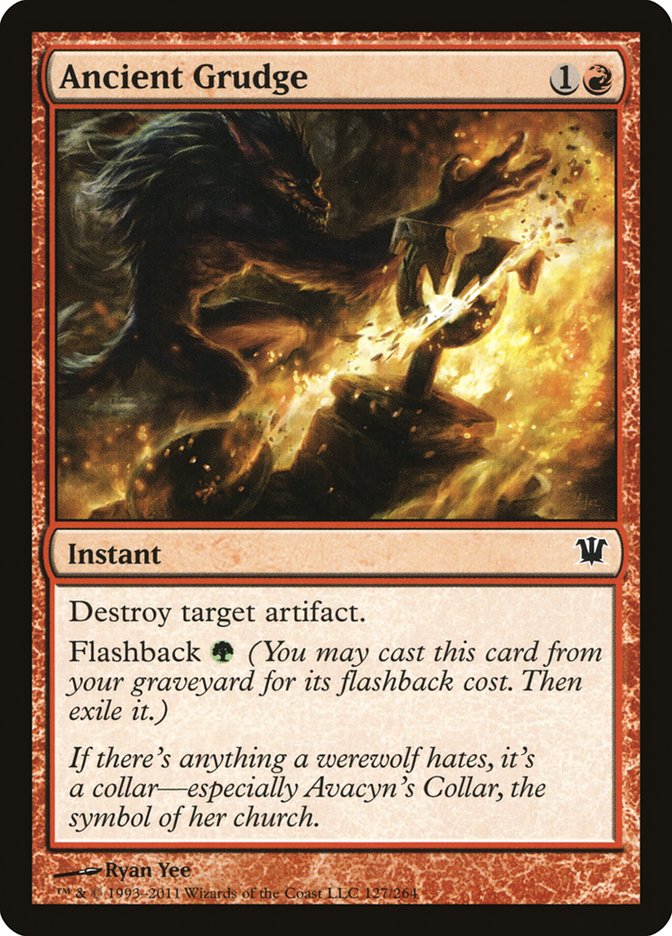The recent Modern unbans are unique in the history of the format.
All four prior unbans are linear cards. Valakut, the Molten Pinnacle was an obvious Scapeshift or Primeval Titan away from a win. Golgari Grave-Troll puts your deck into your graveyard with early card draw and discard. Wild Nacatl is just the flagbearer for Zoo, and Bitterblossom is just slotted into the same B/W Tokens and Faeries decks it fueled in Standard.
Ancestral Vision is a non-linear card. Sword of the Meek is slightly more focused, but the shell is more modular and less defined than these other cards. Modern is so broad and deep that these cards will find a home in some deck that sees at least moderate success, but the obvious question is which home does each belong in.
The interesting part about Ancestral Vision is that it isn’t that old of a history lesson. A lot of parallels can be drawn with the Treasure Cruise era of Modern just over a year ago. The cards literally have the same non-mechanic game text: “Draw three cards.”
The difference is how you fuel them. While Treasure Cruise paid you when you did things just to do more things, Ancestral Vision pays you for doing things to get more turns. This changes what you want slightly. Lightning Bolt is still good, but Gitaxian Probe isn’t and Supreme Verdict is. The same way Treasure Cruise drew you three cards deeper to activate the next Cruise, Ancestral Vision will draw you three spells that buy you more time to unsuspend the next Vision.
I keep seeing Modern lists with Thopter-Sword, Tezzeret, and Ancestral Visions and 0 Thirst for Knowledge. Why?
— Ari Lax (@armlx) April 5, 2016
Thopter-Sword is already a block of do nothings to draw into. Adding Ancestral Visions just means your draw three will be land, blank, spell
— Ari Lax (@armlx) April 5, 2016
This of course involves you drawing cards that actually do things. The immediate failure mode of a lot of the Ancestral Vision brews I see is that they play too many things that are going to be bricks when drawn. The obvious case is the Thopter Foundry pseudo-Stax deck, where your Ancestral Vision will draw you something like land, Ensnaring Bridge, Talisman of Dominance when maybe one of those three cards has an effect on the game.
Funny aside: I learned this lesson in Legacy with the Thopter Foundry decks in that format. Instead of Ancestral Vision, I learned the lesson via Jace, the Mind Sculptor. When you Brainstorm with blanks in hand and a shuffle and draw two more blanks, you learn a lot about what cards do and don’t work together.
After people remedy this mistake, the next culprits that brick Ancestral Vision will be Mana Leak and Inquisition of Kozilek. These cards are so good that you want to play and have to play some number of them, but if you just have four Inquisition of Kozilek, four Mana Leak, your Ancestral Vision on turn 8 will be a bunch of those cards, which amounts to nothing. The maximum is probably around five or six of those effects in varying amounts. Even simple things like mixing Mana Leak with Remand to give the card some play later on helps a lot, especially as Remand is so good against Ancestral Vision.
Jace, Vryn’s Prodigy is a card I’m very excited to pair with Ancestral Vision despite the obvious “anti-synergy” where Vision is not a card you can cast from your graveyard with it. There are actually multiple secondary synergies here. First is that Ancestral Vision is a card that in the start of the midgame is often not ideal, which incidentally is around when Jace gets active and is looking for Merfolk Looter fodder.
The second is that Jace, Vryn’s Prodigy dies easily. Previously Modern didn’t have a single big card advantage spell, so Jace decks were usually grindy piles of two-for-ones. By playing a two-drop, you gave your opponent a chance to get a good one-for-one and do so using a card that might otherwise be bad against a stack of Gurmag Anglers and Snapcaster Mages. Now it’s okay to lose your Jace to a removal spell because that’s time your opponent spent not racing your Ancestral Vision.
Goblin Dark-Dwellers also fits these Grixis shells. It previously didn’t see play due to Eldrazi making Grixis a joke deck, but the deck would play more Snapcaster Mages if it could and can already be built for the sorcery-speed gameplan that Dark-Dwellers supports. The big payoff is that Goblin Dark-Dwellers “cast without paying its mana cost” applies to Ancestral Vision, allowing you to cast it from your graveyard. These lists were already playing Mulldrifter at times, so bigger flexible Mulldrifter is a dream come true. You can’t overload on Goblin Dark-Dwellers, as you need enough cards to cast before Vision resolves to not die, but one or two is perfect.
The following list is basically a direct port of Corey Burkhart’s Grand Prix Pittsburgh Top 8 list last November, which is a fine starting point. It will have to evolve to fight Ancestral Vision mirrors, but that likely just means finding the right counter for the maindeck.
Creatures (10)
Lands (23)
Spells (27)

A few things worth noting here:
Despite Tron taking a hit due to Eye of Ugin being banned, Fulminator Mage is great. There are tons of utility lands that matter to you, it helps you shred Infect, and it just gets people when your sideboard otherwise falls short.
Liliana of the Veil gets much worse when people can draw three cards. It was cut here and likely becomes an interesting sticking point for black midrange lists.
Invasive Surgery counters a bunch of stuff: Ancestral Vision, Scapeshift, and Living End, to name a few. I’ve been waiting for an Envelop in Modern for years and this one is off the charts compared to past ones.
Rakdos Charm is pretty much the perfect card against Thopter Foundry decks. Breaks up the combo in multiple ways and in theory can be double-cast to burn them out.
The other classic Ancestral Vision deck is Jeskai. I’m just going to point you to the Jeskai master Shaun McLaren, but I would also consider a Remand–Snapcaster Mage–Vendilion Clique list that gets to Remand in the Ancestral Vision mirrors and gets a little more aggressive.
Please do not copy the old Ancestral Vision decks and play Vedalken Shackles. That is a card from a different era, where creatures all had -1/-1 from current sizes and no one had Abrupt Decay or Kolaghan’s Command. This card always comes up as an option in testing and always disappoints.
I have no idea if the fact that I haven’t listed a Tarmogoyf deck yet is right. On one hand, a lot of the old 2008 Ancestral Vision decks had Tarmogoyf, but since then actual reasons to play colors other than blue have been printed. Back then, you splashed Tarmogoyf because that was the only good card. Now you have Lightning Bolt, Path to Exile, and so on drawing you to different colors while green is basically just Tarmogoyf and Ancient Grudge.
Faeries is technically an Ancestral Vision deck, but it suffers a lot of the “blank Ancestral Vision” issues when you see a late Bitterblossom or discard spell. Honestly, I’ve always felt the downhill discard curves out of Faeries were more powerful than the Ancestral Vision ones. In Standard it could be the Vision deck because it naturally beat control and used “draw three cards” to scrap with aggro, but Modern aggro is brutal and control can overpower you. Faeries will be a fine Ancestral Vision deck, but it isn’t the deck that gains the most from it.
You can also use Ancestral Vision to refuel in combo decks. We never saw this with Treasure Cruise due to Dig Through Time, and the Twin decks that would have been the main benefactors here are gone. Knight of the Reliquary plus Coralhelm Retreat still exists, but the support cards in Bant don’t play well to an attrition backup plan. That really leaves Scapeshift as the established combo deck where Vision is playable, and it seems quite potent there. The big interaction is that Ancestral Vision lets you Bring to Light for a draw three, which sometimes is all you want. It’s hard to say what gets cut from the deck to make it work, but my guess is just one of everything. You need fewer Scapeshifts if you are drawing a million extra cards a game, right?
Creatures (6)
Lands (25)
Spells (29)

Only deck list note here: Izzet Charm cycles your extra copies of Ancestral Vision and you can run more cards that don’t replace themselves when you have draw-threes.
Okay, maybe one more: Being a Remand deck in the world of Ancestral Vision is awesome.
Don’t get me wrong. Thopter Foundry is yet another card that supports a blue control shell. It just supports completely opposite things to Ancestral Vision.
A lot of the cards that play well on the artifact theme with Thopter Foundry are cards that are a bit clunkier, good in specific spots against specific decks. You can just play Thopter Foundry and Sword of the Meek with minimal other support in a pure control deck, but why do that when so many better win conditions with the card type planeswalker or land exist? With Thopter Foundry, you usually want card selection, not card quantity.
This tends to be a little more finicky, so let’s actually look at old lists. At Worlds in 2009, back when it was a semi-open Pro Tour-style event, I was demolished by William Cavaglieri at the start of his 6-0 run to Top 8 with the following list.
Planeswalkers (3)
Lands (20)
Spells (37)

A lot of cards here are banned and a lot more just aren’t good, but the idea is easy to mimic. Play the bare minimum amount of interaction and filtering to survive the early game, land the combo, and take over. This likely suffers when Modern swings back towards combo decks that are able to kill through some 1/1 fliers, but poking these kinds of holes still seems doable in the right metagame.
The one thing I would examine here is a black-based build with Inquisition of Kozilek as that is now the best broad early interaction. Damnation is a straight-up sweeper replacement, while you can fill the Path to Exile slot with the removal flavor of the week between Dismember, Go for the Throat, Doom Blade, and many more.
An interesting hybrid option is adding Thopter Foundry and Sword of the Meek to a Gifts Ungiven shell. A past example is Academy Ruins, Ritual of Restoration, Thopter Foundry, and Sword of the Meek to assemble the combo. I’m sure that by now there is a better Regrowth effect to finish the set.
The draw to the Gifts Ungiven shell is that you can dual-combo with Unburial Rites to cover some bases. If Thopters are too slow, you can sweep them with Elesh Norn, Grand Cenobite, and most of the combo decks that don’t care about 1/1 fliers are cold to Iona, Shield of Emeria.
The issue here is any of these shells is going to be super-soft to Rest in Peace. You can easily dig to answers and fight over it, but who wants to do that? What if we choose a shell where, when they exile our graveyard, we can shrug and jam through?
Creatures (2)
Planeswalkers (7)
Lands (21)
Spells (30)

This list was buried in a chain of Treasure Cruise to Amulet of Vigor to Eldrazi Temple skewing the format, but Shota Yasooka has a history with Tezzeret across multiple formats and optimized the above list for the pre-Thopter Foundry metagame.
This list interests me the most because it has the most potential to play an actually broken card in Mox Opal. That card alone lifts two existing decks to the status of “ban discussion-worthy,” so if I’m building a new artifact deck, odds are I’m going to try to make it work. The other known powerful card that fits the theme and didn’t exist before is Ancient Stirrings, but I’m unsure the mana works for Sultai without the painless untapped Scars lands and Grove of the Burnwillows that Lantern has.
On that note, I’m not a big fan of Thopter-Sword in the Lantern shell. In the past we have seen flexible shells cave to the raw power of new cards (looking at you Griselbrand), but I’m not sure Thopter-Sword actually overpowers anything that Lantern doesn’t already handle. If it does, it could easily change the way the whole deck works, but for now, Pyroclasm seems to do a lot of what people want the combo to do. Lantern is a weird deck of interaction, perfect answers, and chess, not normal Magic where combos win games.
This path is not without a cost. You are able to play through graveyard hate, but suddenly Ancient Grudge is the end of days. Stony Silence you can probably fight through, but Grudge either shreds your mana, your lock, or your threats depending on which one wrecks you the most. This may just be a case where you have to constantly adjust for the metagame. The weeks Jeskai is king, you want to be on heavy artifacts. The weeks Temur is on top, you want to be graveyard-focused.
I want to make the following clear. Neither of these cards is going to break the format open. They don’t violate fundamental rules of the format the way cards that get actually banned do.
But they will change it. If anything, the real winners of this unban are the people who look a step ahead. Not just to how to build a deck with these card, not just how to beat them, but what they force out of the way and what holes it opens. If you have Modern to play in the first weeks of the new format, by all means be the person casting these cards the best ways. But if you have time, take a moment to watch the big picture.
Modern is still a format where you are exploiting what people aren’t doing. Don’t forget that.


